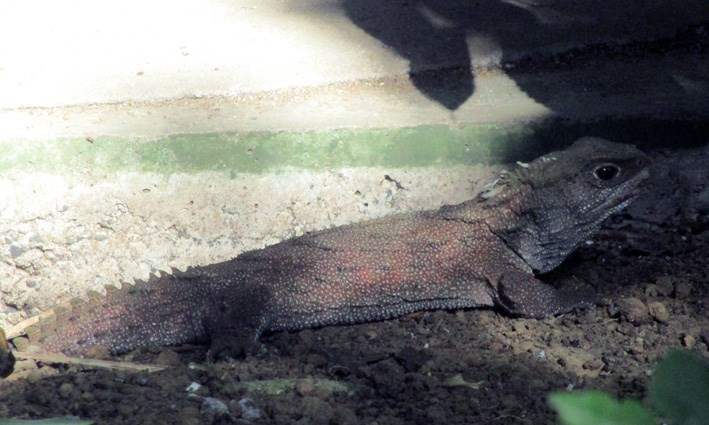Roughly 180 million years ago, the super-continent Gondwana broke up and the pieces floated away to become Antarctica, Africa, South America, Australia, and of course New Zealand and Madagascar.
Both Madagascar and New Zealand have been isolated from other the continents for millions of years and, as a consequence, life on the islands has followed its own evolutionary paths. For example, a multitude of lemurs have evolved in the jungles of Madagascar. Ringed-tail, red ruffed, grey mouse, and the mysterious Aye Aye are just some among over 100 different species which exist on the island.
Madagascar was also home to the Elephant Bird, a flightless ratite, which could reach 3 metres in height and weigh 450 kg. These birds became extinct somewhere between 1000 and 800 years ago, after humans had arrived on the island.
New Zealand was part of a continental shelf called Zealandia. It is now recognized as a sunken continent extending into the surrounding oceans. The island nation is all that remains above the waves. It is a very remote country. At its closest point, it is roughly 1,600 kilometres from Tasmania and South Eastern Australia. It is over 2,000 kilometres between Sydney, Australia, and Auckland, New Zealand.
It was also one of the last places on Earth to see human occupation. It began with the arrival of the Maori from Tonga and the Cook Islands around 1280 CE while Europeans arrived about 400 years later. Prior to the arrival of human beings, New Zealand was unique in not having any endemic mammalian species. As a consequence, birds filled the major ecological roles occupied by mammals elsewhere.
The largest of all animals on the islands was the Moa. A ratite like the Elephant Bird, the Moa’s head could be as high as 4 metres off the ground, while their backs were just over 2 metres high. However, unlike the Ostrich or Emu, the Moa didn’t typically walk with its head up. Instead, it would extend its neck forward similar to the Kiwi. Moa were also slightly lighter than Elephant Birds with a full grown bird weighing between 200 and 275 kilograms.
Given its size and rather impressive claws on its feet, the Moa had few natural predators. The Haast Eagle, a 33 kg bird with a massive wingspan, would sometimes use its ability to fly to take down adult Moa while Moa eggs, if left unattended, were a valuable food source for smaller creatures but the Moa were pretty much king of the jungle.
That changed with the arrival of humans. The Moa were easy prey as they had not evolved a “flight-or-fight” response as found in more predatory environments. By 1450, the Moa were deemed to be extinct.
Their smaller relative, the Kiwi, has lived on. In part, this is due to their nocturnal nature. They hunt the forest floor under the cover of darkness searching for grubs, worms, and other insect in the litter. They are also a ratite and genetics has shown it is the tiny Kiwis which are the closest relative to the Elephant Bird not the massive Moa.
There are presently four species of Kiwi still inhabiting the islands. They do have wings but they are not very large and end in a hook rather than feathers. The Kiwi uses the hook to catch its sizeable snouts when asleep. They are about the size of chicken but with 10 cm pointed snouts. Technically, they have one of the shortest beaks of all birds because their nostrils are located at the end and a beak’s length is measured from the nostrils to the tip. They also lay the largest egg relative to body mass of any bird. It is huge.
As interesting as the birds of New Zealand are, the creature which has garnered scientific attention recently is the Tuatara. It is a reptile endemic to New Zealand and although they resemble most lizards, they are a separate branch on the tree of life, being members of the order Rhynchocephalia.
Tuatara are the last surviving members of this order of reptiles from the age of dinosaurs. Their closest relatives became extinct 60 million years ago. In effect, they are living fossils although that would imply that the species hasn’t changed in 60 million years. Unfortunately, we don’t have enough of a fossil record to trace the exact lineage.
But recent work by Neil Gemmell and co-workers, including the Ngatiwai, has probed their complete genome and been able to show the crucial link with the now-extinct stem of reptiles from which dinosaurs, modern reptiles, birds, and mammals have evolved.
They are distinct among reptiles as they are relatively cold tolerant but perhaps their most unusual feature is that they have a “third eye” able to detect light and dark.
New Zealand and the islands of the world are home to many unusual creatures.



